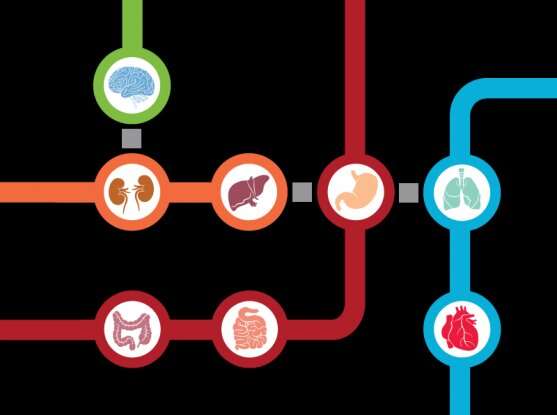Map shows how cancer cells spread through the body

The vast majority of cancer deaths are attributed to metastasis, or the spread of tumors from one organ to another. Determining if a cancer will metastasize has been all but impossible, but if it does, it becomes more difficult to treat because of its multiple locations in the body and resistance to cancer treatments.
New work from a team led by researchers at the Broad Institute of MIT and Harvard shows that it is possible to predict metastasis of human cancer cells in animal models. In a study published in Nature, scientists from the Broad’s Cancer Program found that whether a cancer spreads, how well it spreads, and to which organ depends on a number of genetic and clinical factors. The team pulled together the features associated with metastasis for 500 human cancer cell lines to create the Metastasis Map, or MetMap, the first ever map of how different cancers spread.
The resource could help scientists discover new details about what drives metastasis, why some cancers spread more aggressively than others, and how to potentially slow or stop this deadly process with new cancer drugs.
“Unfortunately for too many cancer patients, their tumors continue to grow despite therapy,” said Todd Golub, Chief Scientific Officer of the Broad and the Charles A. Dana Investigator at the Dana-Farber Cancer Institute. “That would lead you to think that some tumors can survive anywhere, but it turns out that’s not the case.”
Tracking the spread
The MetMap grew out of research by Xin Jin, a Susan G. Komen Postdoctoral Fellow and now a research scientist in the Cancer Program. He and his collaborators labeled each of the 500 cancer cell lines, representing 21 different cancers, with unique DNA barcode molecules that allowed them to identify and track the cancer cells. The researchers then injected the cell lines in various combinations into the circulation of mice.
Jin and his team monitored the spread of the cells and after five weeks, collected samples from the brain, lung, liver, kidney and bone to determine which cell lines took up residence in which organ. The team found that over 200 of the cell lines survived and metastasized in the mice. They identified key features linked to tumor spread, including tumor type, the site of origin, and the age of the patient the cells were derived from. The researchers used this information to generate MetMap, along with an interactive graph showing the metastatic potential for each cancer cell line.
“Nobody believed this approach would work in the beginning, including myself,” said Jin. “It turns out that it worked pretty robustly and the results yielded unexpected information about what enables different cancers to adapt to the different environments of the organs.”
To show the value of their data, the researchers further studied a type of breast cancer that MetMap revealed tended to spread to the brain. They compared the genomes of these cell lines to those of non-metastatic breast cancers and pinpointed a number of differences that promoted spread to the brain. In particular, they noted that key changes in lipid metabolism in the breast cancer cells allowed them to survive in the brain’s microenvironment, suggesting that future treatments could interrupt lipid metabolism to potentially slow this metastasis.
Source: Read Full Article



